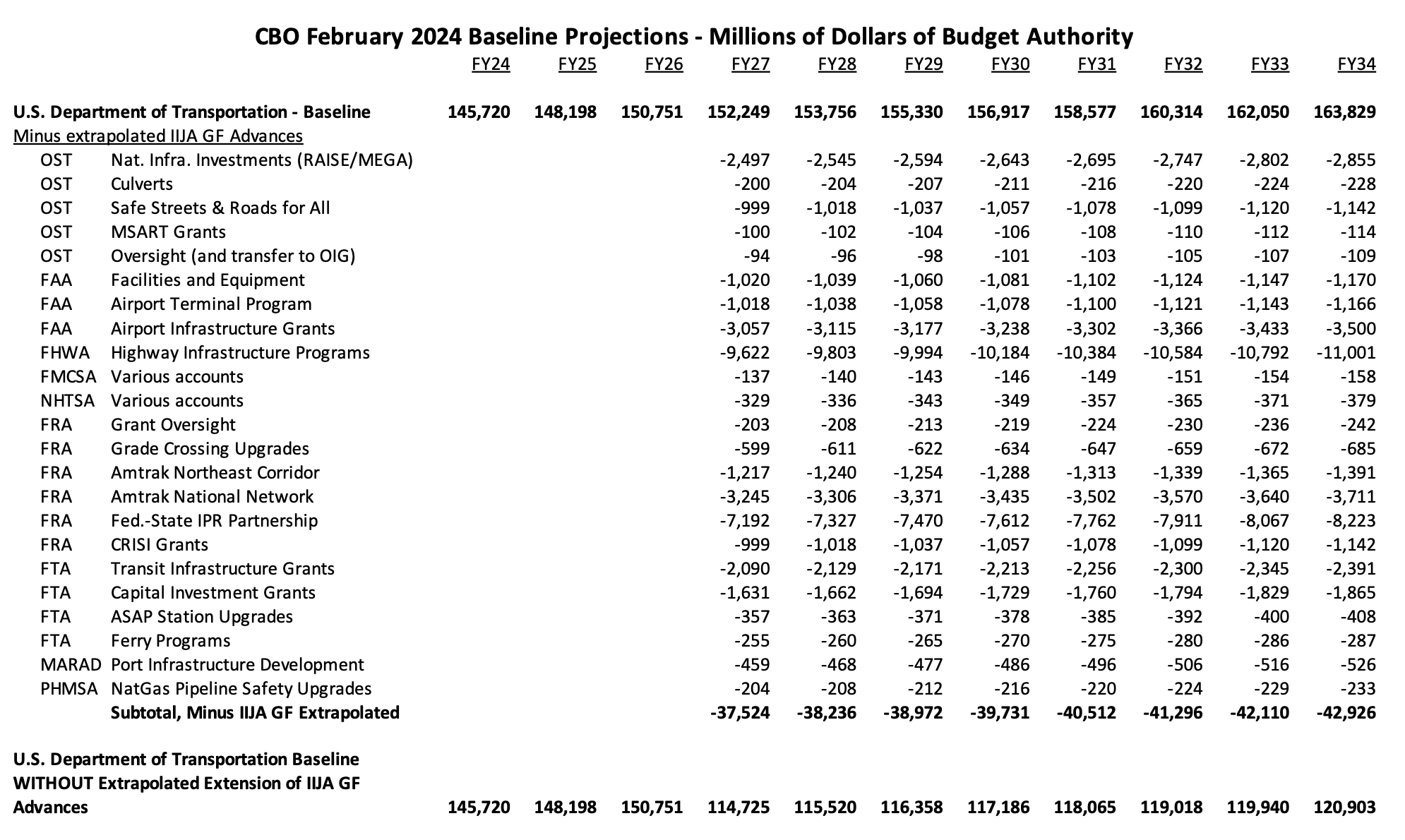Congress will face an important decision two years from now: do they want the U.S. Department of Transportation to continue to be a $150+ billion per year agency, or allow it to be downsized back to $115 billion per year?
Two years hence is when Congress will start debating the fiscal 2027 budget, which is the first year after the one-time, five-year “advance appropriations” made by the 2021 infrastructure law (the IIJA) expire.
Division J of the IIJA provided $446 billion in appropriations, much of it “advance appropriations” that were enacted in fiscal 2022 but which don’t become available for commitment until some future year. At DOT, that money was evenly spaced out – just over $36 billion per year in each of fiscal years 2022, 2023, 2024, 2025 and 2026. The first three years are already available, and year four money will pop into existence on October 1 of this year.
Budget baseline projections are Newtonian in nature – the law requires the baseline to assume that things that are happening right now will continue to happen in the future, and things that are not happening now won’t start happening, ever. In other words, a budget account that got money this year will continue to get money each year in the future, forever, and Congress won’t be in the business of establishing new budget accounts, ever.
This approach isn’t always true, obviously, but the gist of it is true at least 50 percent of the time, which is why the baseline rules require this approach. The law requires CBO and OMB, when assembling baselines, to “extrapolate” future discretionary appropriations for every account where appropriations were made for the current fiscal year (the one in progress while the baseline is being constructed).
Accordingly, all of those IIJA advance appropriations are assumed to be continued after their expiration at the end of 2026, and indexed slightly for inflation. If Congress decides not to appropriate new money for those programs for fiscal 2027, that would mean a $37.5 billion reduction in USDOT spending vs the baseline, and inflation would push that to $42.9 billion by 2034.

But even though stakeholders (state DOTs, cities, the construction industry, unions) want to make the spending from the IIJA advances a kind of “new normal,” this was not the original intent. The IIJA was billed by the White House, over and over, as a one-time jolt of additional spending to get neglected infrastructure back to a state of good repair. As the official White House press release said on the day the House passed the bill (emphasis added):

(If you do the same thing five years apart, neither thing is really a “once in a generation” thing, unless we are talking about generations of sockeye salmon.)
It should be noted that, so far, President Biden has not proposed extending the IIJA advances. Here is what the out-year table in his budget request from one year ago (the FY 2024 budget) looked like for DOT – keep an eye on the BA line, and compare it to the above CBO baseline:

Biden’s next annual budget request, for FY 2025, will be released on March 11. Will it reverse course and propose extension of some or all of the IIJA advances, in order to get the conversation started for future cycles? Or will Biden wait and see if he gets re-elected, and then, if he does, wait until the 2026 or 2027 budgets to propose the extension?






